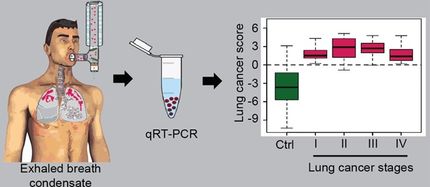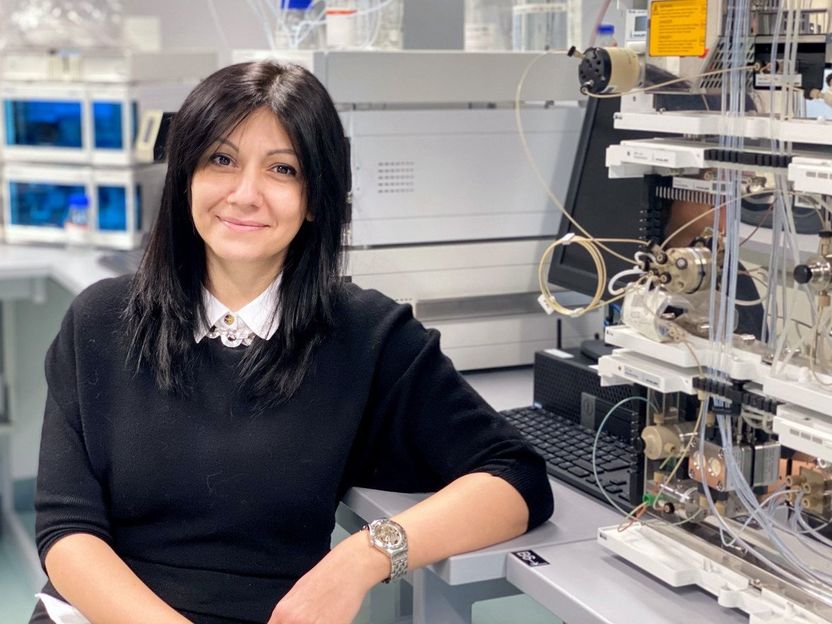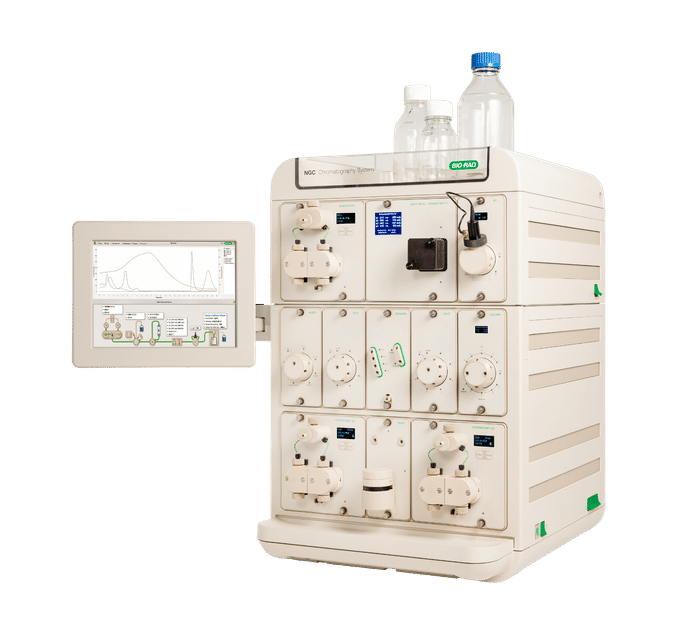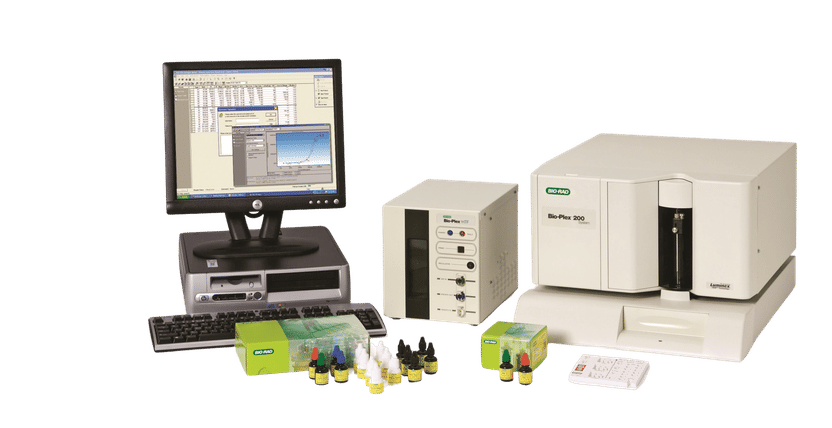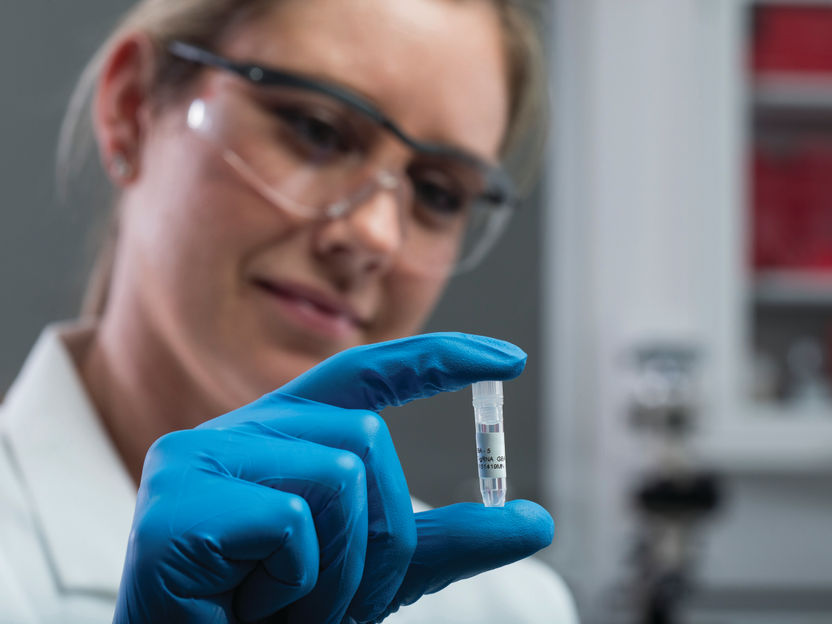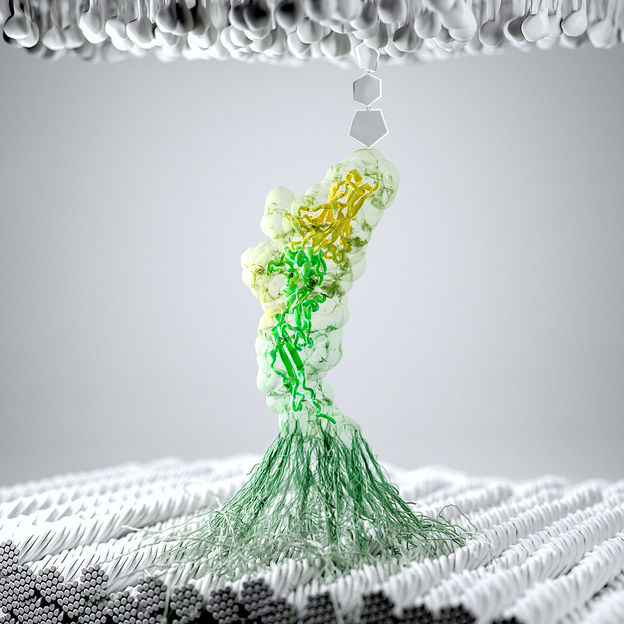Detection of cancer from exhaled breath
Breath gas analysis for medical diagnostics
The air we exhale contains information that can assist with the diagnosis of disease. Researchers at the Fraunhofer Project Hub for Microelectronic and Optical Systems for Biomedicine MEOS are now developing solutions designed to enable the analysis of breath gas for this purpose. Although their research focuses on the early detection of cancer, the same principle could also be applied to distinguish between Covid-19 and other respiratory diseases.
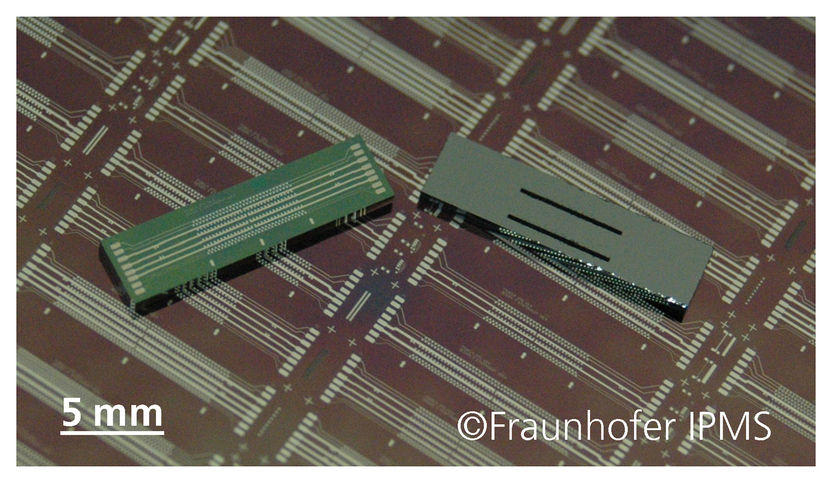
At the heart of this novel ion-mobility spectrometer is a miniaturized FAIMS chip.
© Fraunhofer IPMS
Some diseases have a distinct odor. A faintly sweet and fruity acetone smell, for example, can indicate diabetes. Indeed, there are reports of physicians in Ancient Greece who were able to detect disease by the smell of a patient’s breath. These characteristic odors are caused by certain volatile organic compounds (VOCs) that are emitted by diseased tissue or the pathogen itself before the first symptoms become manifest.
Exhaled air provides a fingerprint of the patient’s metabolism
“A lot of diseases cause a change in the composition of the volatile organic trace gases in exhaled air that can be used as biomarkers,” explains Dr. Jessy Schönfelder, research associate at Fraunhofer MEOS. “It’s often a combination of several trace gases in a significantly elevated or significantly reduced concentration that is characteristic for a specific disease. This is known as the VOC fingerprint or VOC pattern.” Fraunhofer MEOS in Erfurt is an interdisciplinary project hub involving the participation of the Fraunhofer Institutes for Cell Therapy and Immunology IZI, Photonic Microsystems IPMS, and Applied Optics and Precision Engineering IOF.
There are specific marker combinations for many more diseases than was once thought. Each one of them has to be painstakingly deciphered. This is the task facing Schönfelder, a chemist by training, and her team. Together, they are now developing a special ion-mobility spectrometer (IMS) with which to identify these VOC patterns. Given that each person exhales around 200 VOCs, this is by no means an easy job. The focus of this research is the detection of cancer – particularly lung cancer.
The research team at Fraunhofer MEOS hopes this new technology will be able to detect a broad range of biomarkers. They also want to use it to distinguish between COVID-19 and other respiratory infections. It likewise features in the Fraunhofer cluster project M3Infekt, which is developing a mobile, modular, multimodal monitoring system to enable rapid intervention in the event of a sudden deterioration in the condition of COVID-19 patients. Furthermore, it is hoped that this method of breath gas analysis might provide an advance indication of neurodegenerative diseases such as Alzheimer’s. This would not only provide earlier warning than with conventional methods such as blood testing but also be more convenient, since it merely requires that the patient breathe into a tube.
“There’s huge potential for sensor systems in breath gas analysis,” Schönfelder explains. “IMS technology is noninvasive, sensitive and selective. And it is quick, inexpensive and also compact and portable, so there’s no reason why it shouldn’t be used in medical practices and hospitals. The finished product will be about the size of a shoebox.”
A FAIMS chip with alternating voltage
At the heart of this novel IMS system is a miniaturized high-field asymmetric ion mobility spectrometry (FAIMS) chip. The microelectromechanical system (MEMS) comprises an ion filter and a detector. The device also features a UV lamp. In the first instance, the VOCs – borne in a carrier gas – are pumped into the spectrometer, where they are ionized by means of UV light. In other words, they are changed into charged molecules. “These are then fed to the FAIMS chip, which was developed by Fraunhofer IPMS,” says Schönfelder. “An alternating voltage is then applied at the filter electrodes. By adjusting the voltage at the filter, you can control which VOCs get through to the detector. This generates a VOC fingerprint, which enables us to identify the disease we’re looking for.”
At present, the research team is working to enhance the electronic control system and to improve sample extraction and sample processing. Meanwhile, reference measurements with cell cultures have now been successfully conducted, and further investigations with clinical human samples are in the pipeline. In a project recently completed at Fraunhofer IZI, scientists using a similar technology were able to distinguish seven different bacterial strains.
At the same time, specially developed AI algorithms are expected to simplify the evaluation of VOC fingerprints. “Each measurement generates half a million readings,” Schönfelder explains. “So we want to use machine learning to analyze this huge volume of data.” The algorithm is trained using samples from healthy test subjects and cancer patients. The results of such measurements are available within a few minutes. “And we can well imagine that our ion-mobility spectrometer might one day be used to screen airline passengers so as to determine whether they are infected with the coronavirus,” she adds.
Other news from the department science
Most read news
More news from our other portals
See the theme worlds for related content
Topic world Diagnostics
Diagnostics is at the heart of modern medicine and forms a crucial interface between research and patient care in the biotech and pharmaceutical industries. It not only enables early detection and monitoring of disease, but also plays a central role in individualized medicine by enabling targeted therapies based on an individual's genetic and molecular signature.

Topic world Diagnostics
Diagnostics is at the heart of modern medicine and forms a crucial interface between research and patient care in the biotech and pharmaceutical industries. It not only enables early detection and monitoring of disease, but also plays a central role in individualized medicine by enabling targeted therapies based on an individual's genetic and molecular signature.

